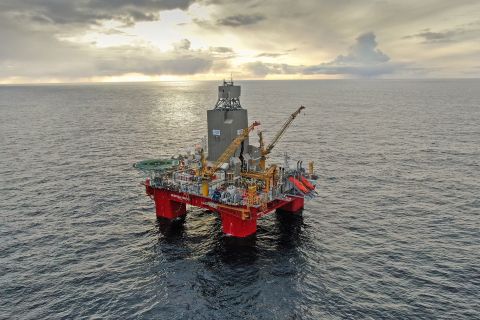As Russia trims its supply and China ramps up consumption, the oil market will tip into a deficit, lifting prices above $90/bbl towards the second half of 2023, a Reuters poll showed on Feb. 28.
A survey of 49 economists and analysts forecast Brent crude would average $89.23/bbl this year, slipping from the $90.49 consensus in January, but still above current levels of around $83.
West Texas Intermediate (WTI) U.S. crude was projected to average $83.94/bbl in 2023, below previous month's $85.40 forecast.
Brent prices are seen rising above $90/bbl in the second half of the year after averaging around $85 in the first quarter and $88.60 in the second quarter on slower demand from key consuming regions such as Europe and the United States, some of the analysts said.
RELATED: TotalEnergies CEO Says $100/bbl Could Come Back
"The impact of the price cap for both crude and product (is) less than initially expected due to the emergence of substitution trades," said Florian Gruenberger, senior analyst at Kpler, referring to international sanctions aimed at confining Russian oil sales to an enforced low price.
Gruenberger expects a 600,000 bbl/d year-on-year hit to Russian supply from lower domestic intake, weaker demand and slightly lower exports.
Next month, Russia is set to cut output by 500,000 bbl/d and further slash oil exports from its western ports by up to 25%, as mounting Western sanctions drain its revenues.
The world's second-largest oil exporter will seek to redirect its shipments of crude as well as refined products to countries such as China and India that have not sanctioned Moscow over its invasion of Ukraine.
"China will continue to scoop up Russian product at a discount," said Robert Yawger, energy futures strategist for Mizuho Bank.
The International Energy Agency sees China accounting for almost half of this year's 2 MMbbl/d growth in global oil demand, which could overtake supply after the first half and push producers to reconsider their output policies.
However, analysts expected OPEC+, the Organization of the Petroleum Exporting Countries (OPEC) and allies including Russia, to stick to its output policy for now, betting on a tighter market with its eyes set on a rebound to $100/bbl.
"OPEC+ will be in no hurry to loosen their taps and may only change course late in 2023 if demand surprises on the upside," said Suvro Sarkar, energy sector team lead at DBS Bank.
Recommended Reading
Vår Energi Hits Oil with Ringhorne North
2024-04-17 - Vår Energi’s North Sea discovery de-risks drilling prospects in the area and could be tied back to Balder area infrastructure.
Tethys Oil Releases March Production Results
2024-04-17 - Tethys Oil said the official selling price of its Oman Export Blend oil was $78.75/bbl.
Exxon Mobil Guyana Awards Two Contracts for its Whiptail Project
2024-04-16 - Exxon Mobil Guyana awarded Strohm and TechnipFMC with contracts for its Whiptail Project located offshore in Guyana’s Stabroek Block.
Deepwater Roundup 2024: Offshore Europe, Middle East
2024-04-16 - Part three of Hart Energy’s 2024 Deepwater Roundup takes a look at Europe and the Middle East. Aphrodite, Cyprus’ first offshore project looks to come online in 2027 and Phase 2 of TPAO-operated Sakarya Field looks to come onstream the following year.
E&P Highlights: April 15, 2024
2024-04-15 - Here’s a roundup of the latest E&P headlines, including an ultra-deepwater discovery and new contract awards.





